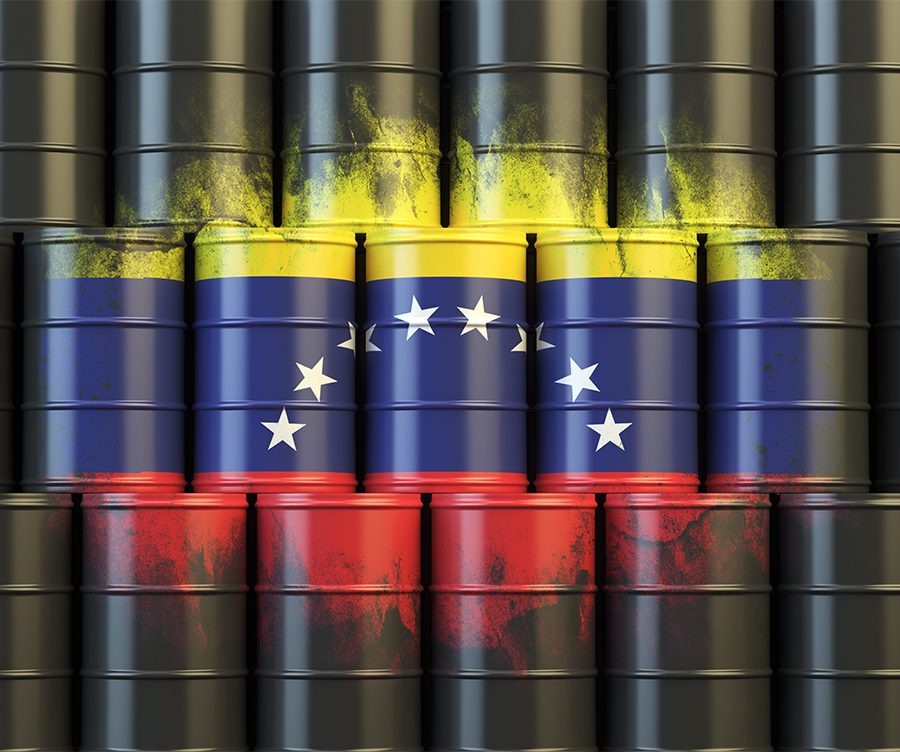(S&P Global Platts) Venezuelan state-owned PDVSA will offer from October in the international market the upgraded heavy crudes Morichal 16, Zuata Sweet and Hamaca Special Blend to compensate for the fall in the production of Merey, which is its main export crude, according to internal documents seen by S&P Global Platts.
The new marketing strategy that seeks an alternative to the now scarce Merey requires stabilizing operations at four upgraders — Petromonagas, Petrocedeño, Petropiar and Petro San Félix — in addition to the Sinovensa blending plant. PDVSA also requires light crude to continue producing Merey, but local production is in deficit and imports are limited by US sanctions.
According to internal documents, PDVSA will restart the Petromonagas upgrader with an initial production of 22,000 b/d of Morichal 16 crude in October. The upgrader, owned by a partnership between PDVSA (60%) and Russia (40%) has been out of service since March 2019.
The most recent export of Morichal 16 is dated January 2019, according to the internal reports. Morichal 16 is an upgraded heavy crude of 16 API grades and 3.4% sulfur content.
PDVSA restarted its Petrocedeño upgrader on June 29, after being shut down since April 2019. By September/October PDVSA plans to produce at this upgrader 90,000 b/d of 22-degree API synthetic crude called Zuata Sweet, which will be destined for both export and processing in the local refining system.
However, in September this production target may be compromised by the shutdown of the production field operated by Petrocedeño in the Junin block of the Orinoco Belt, in southern Venezuela, due to a fire that took place in a diluent transport line on Sept. 7. The fire spread over a kilometer without causing any injuries, according to local media reports.
France’s TotalEnergies and Norway’s Equinor divested their stakes in Venezuela’s Petrocedeno joint venture to Corporacion Venezolana de Petroleos (CVP), an affiliate of the state-owned PDVSA, both companies said July 29. TotalEnergies and Equinor transferred their 30.32% and 9.67% stakes in Petrocedeno, respectively, giving PDVSA 100% control of Petrocedeno.
A third upgrader, Petropiar, owned by a joint venture between PDVSA (70%) and Chevron (30%), has been affected by low diluent inventories. For September/October, PDVSA has estimated at 120,000 b/d the production of upgraded 17.2-degree API Special Hamaca Blend (SHB) crude for export.
Petro San Felix, the fourth upgrader that is 100% owned by PDVSA, has been out of service since November 2018 with no official restart date.
Sinovensa — a joint venture between PDVSA 60% and China’s CNPC 40% — is key in the upgrading process of extra heavy crudes extracted from the Orinoco Belt, a giant reservoir in southern Venezuela containing reserves of approximately 220 billion barrels of a very viscous oil loaded with sulfur and heavy metals.
Sinovensa produces DCO (diluted crude oil) a blend of extra heavy 8.5 API (American Petroleum Institute) grade with naphtha that is sent by pipeline to upgraders, where the naphtha is extracted in a first process, to later produce synthetic crudes of higher API gravity through different processes. Sinovensa also produces Merey.
In early August, Sinovensa stopped operations for three days due to lack of light crude to produce Merey.
Merey production falls
Since late 2018 and early 2019, synthetic crude production has been halted due to lack of maintenance of upgraders, which were partially converted into plants to blend extra-heavy crude with light crude to produce grades such as Merey 16, according to previous reports.
Low inventories of light crude, used as a diluent, have caused Merey production to fall to an average of 90,000 b/d in August from 400,000 b/d in July.
“No naphtha or light crude surpluses or imports are contemplated for the upgrading system. No variations are foreseen in the impacts of international financial blockades on the commercialization and distribution of hydrocarbons,” internal reports said.
Merey exports and inventories
In August, Merey exports increased to 10.3 million barrels from 8.7 million barrels recorded in July, according to internal reports.
Seven Merey cargoes left the port of Jose, in northeastern Venezuela, five of them with a final destination of Singapore and two for China in August. However, with these exports, PDVSA depleted its Merey inventories.
According to reports, Merey’s crude oil inventories for export were 1.2 million barrels as of Aug. 30, or 36.4% of maximum storage tank capacity. Inventories of naphtha and light crudes used to dilute extra heavy crude from the Orinoco Belt were said to be at “critical levels,” according to internal reports.
In August, naphtha inventories were at 20,000 barrels, or 2% of storage capacity, while light Mesa and Santa Barbara crudes used as diluents were at 90,000 barrels, or 2.6% of storage capacity.




